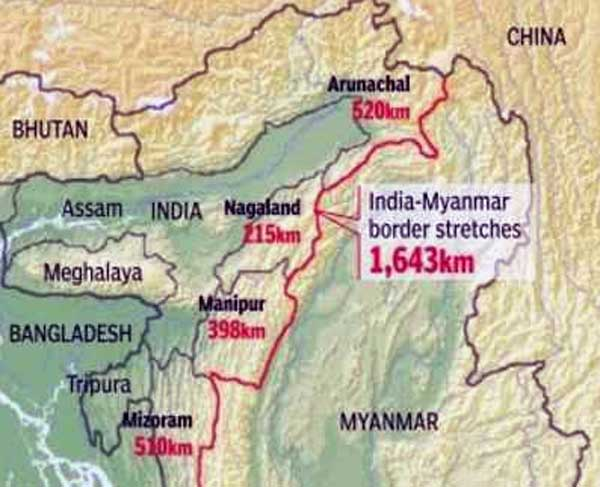LONGWA, April 7: Tonyei Phawang, the 49-year-old Angh (hereditary chief) of Longwa village in Nagaland’s Mon district, has strongly appealed to the Central Government to reconsider its decision to fence the Indo-Myanmar border and reduce the Free Movement Regime (FMR) zone. His plea highlights growing concerns among tribal communities along the international boundary, particularly the Konyak Nagas, who have deep familial and cultural ties that transcend the artificial border.
Phawang, the 10th-generation tribal chief, governs 35 villages—30 in Myanmar and five in India. His ancestral home itself straddles the international boundary, with the demarcation line cutting through the structure. “Movement of our family members within the house is also international,” he stated, emphasizing the impracticality and unfairness of enforcing such a policy. “If the Centre enforces border fencing, even my own family members would require a permit to move freely inside our home.”
He warned that fencing the border and reducing the FMR from 16 km to 10 km would not only disrupt centuries-old traditions but also critically affect the livelihoods of Konyak Nagas who rely on access to both sides for basic services. Many villagers from the Myanmar side cross into Mon district regularly to avail themselves of markets, healthcare, and education, with several students attending five schools in the region, including two state-run institutions.
Introduced in 2018, the Indo-Myanmar Free Movement Regime allows residents within 16 km on either side of the border to travel visa-free for up to 72 hours. However, the Centre has proposed to reduce this zone to 10 km, citing national security concerns.
“We do not want fencing of the Indo-Myanmar border,” said Phawang. “The people here have upheld centuries-old bonds peacefully. Fencing the border would damage these ties.”
Longwa is globally recognized for its unique geography—the India–Myanmar border cuts directly through the village and the chief’s residence. According to Phawang, this longstanding arrangement fosters mutual dependence among the people living across both sides. “My own house, originally a thatched structure and reconstructed in concrete in 2016, has been split between India and Myanmar since the boundary demarcation after India’s independence,” he explained.
He praised the Assam Rifles for maintaining peace in the region and offering critical services like free healthcare to local residents. “Despite the open border, there have been no untoward incidents,” Phawang pointed out, reinforcing the community’s commitment to harmony.
He urged the Centre to expand, rather than reduce, the FMR and to consider the real-life complexities faced by indigenous communities. “All these would be very unfair and therefore as the Chief Angh, I hope the Centre would reconsider its decision and think for the welfare of the people at the ground,” he said.
Earlier, several civil society groups such as the Eastern Nagaland People’s Organization (ENPO) and the Konyak Union have voiced similar opposition to the Centre’s fencing proposal, stressing the importance of familial and cultural unity across borders.

